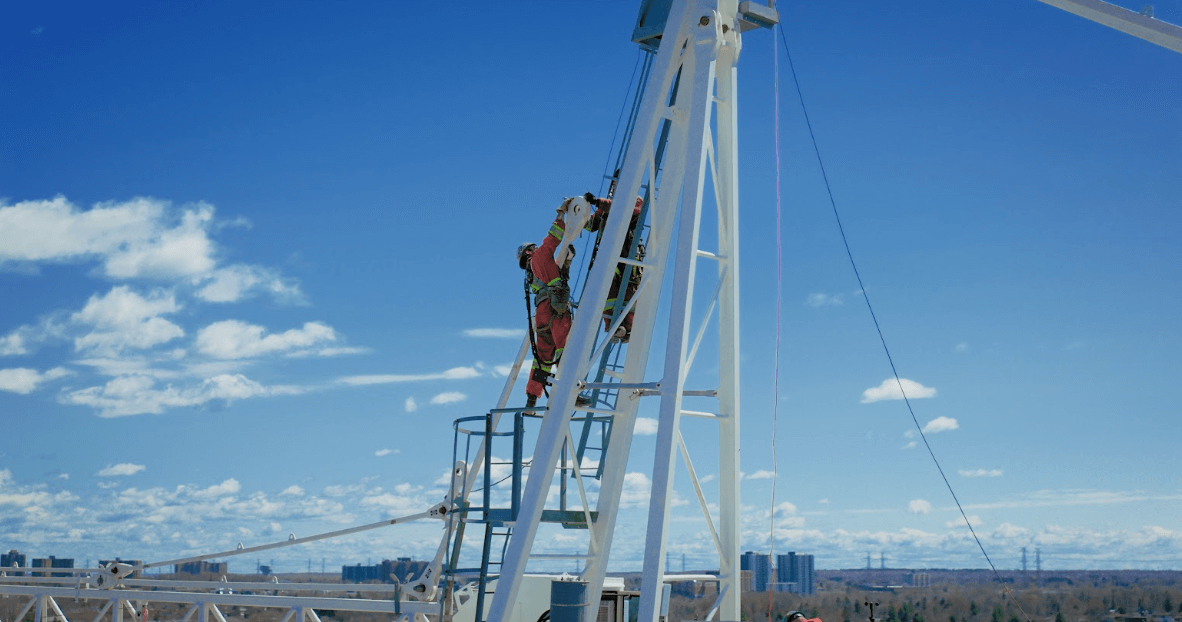Cranes are among the most heavily regulated and high-risk equipment on any jobsite. A single missed step during an inspection can result in dangerous accidents or costly delays. Many companies have moved from pen and paper to software for inspections, but not all solutions are created equal. If your current software lacks critical safety features or fails to streamline your processes, it might be falling short of what your team needs to stay safe and compliant.
It might be time to ask: is your current software doing enough to protect your business and your team?
The Problem with Outdated or Basic Software
Not all inspection and safety software is created equal. Here’s where many solutions fall short:
Limited Safety Features:
Many basic software tools don’t accommodate the detailed requirements of crane inspections. Critical checks like boom inspections, wire rope integrity, or hydraulic system assessments might be missing entirely, leaving your inspections incomplete and unsafe.
Lack of Real-Time Reporting:
If your software doesn’t provide instant updates or alerts, critical issues—like worn wire ropes or cracked sheaves—may go unnoticed until it’s too late. Delays in reporting can lead to accidents and unnecessary downtime.
Inadequate Customization:
One-size-fits-all software often fails to address the unique inspection needs of different crane types, such as tower cranes, mobile cranes, and overhead cranes. Without customization options, operators may skip steps or provide incomplete data.
Real-World Example: When Software Misses the Mark
Even the smallest gaps in inspection processes can have serious consequences. Imagine this: during a pre-shift check, an operator notices abnormal wear on a tower crane’s pin assembly. However, the inspection form in their software doesn’t include a specific field to document this component, and the issue goes unflagged. By the time the wear is noticed by maintenance, the damage has worsened, leading to a costly delay in the project—and putting worker safety at risk.
This scenario illustrates a critical flaw in software that lacks customization or fails to prioritize safety-critical alerts. With the right tools in place, such issues could be flagged immediately, triggering the necessary repairs and avoiding both downtime and hazards. Don’t let inadequate software put your team or your projects at risk.
What a Better Solution Looks Like: 5 Must-Have Features
To keep your team safe and compliant, your inspection and safety software for crane operations should offer these 5 things:
- Advanced Customization for Crane Types: Customizable forms let you create detailed checklists for each crane type. Whether you’re inspecting tower crane tie-ins, mobile crane outriggers, or wire rope integrity, every item gets the attention it deserves.
- Real-Time Alerts and Notifications: With smart fields, potential issues like hydraulic leaks or excessive wear trigger automatic alerts to supervisors. This ensures the right people are notified immediately, minimizing downtime and keeping your team safe. With real-time updates, supervisors can access completed inspections instantly—even from another jobsite.
- Comprehensive Recordkeeping & Instant Availability: Proper recordkeeping is essential for crane inspections, especially since there are required retention periods for monthly and annual inspections. Some outdated software solutions lack an intuitive filing system or sufficient storage capacity, making it difficult to organize, retrieve, or audit past records. Inadequate digital filing systems can lead to misplaced records or cumbersome searches, leaving companies vulnerable during compliance audits.
- Integrated Photo Annotations Tools: Operators can attach photos directly to forms, annotate them, and provide clear, actionable details about any problems. This eliminates guesswork and speeds up decision-making.
- Automated Workflows for Repairs: Flagged issues automatically create tasks for maintenance teams, streamlining resolution and ensuring safety-critical repairs are addressed promptly.
The Bottom Line
Your crane inspection software should be an asset—not a liability . If your current software isn’t catching critical details, providing real-time insights, or streamlining your workflow, it’s time to upgrade. Customizable forms, smart alerts, and automated workflows can transform how you manage crane inspections—making your team safer and more efficient.
Ready to stop relying on outdated tools? See how smarter inspection software can help your crane operations thrive. Book a Corfix Demo.

